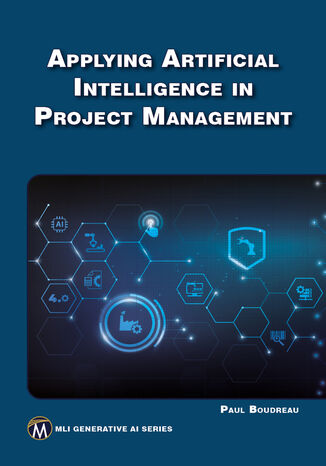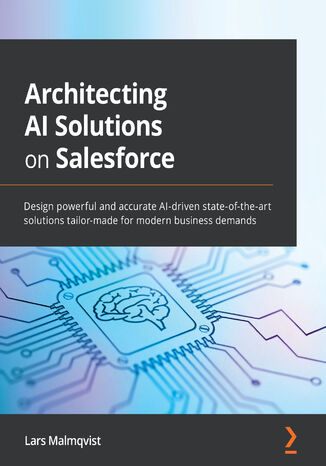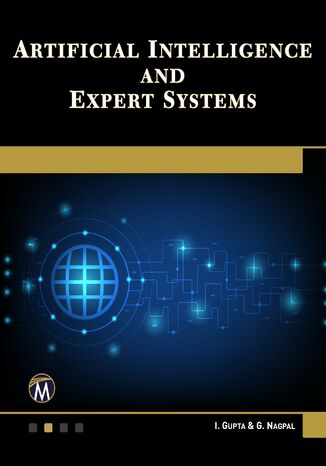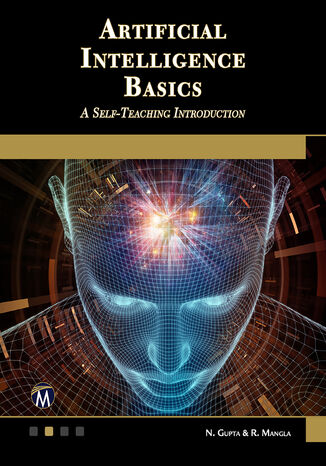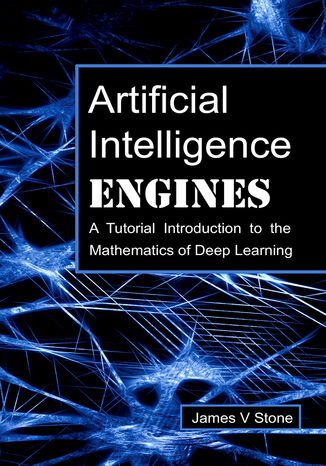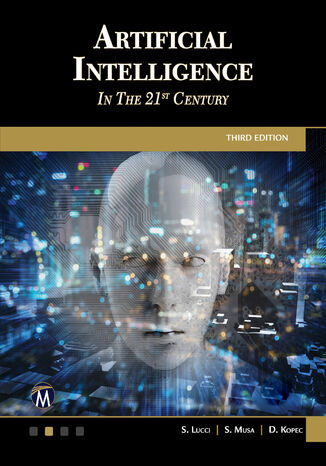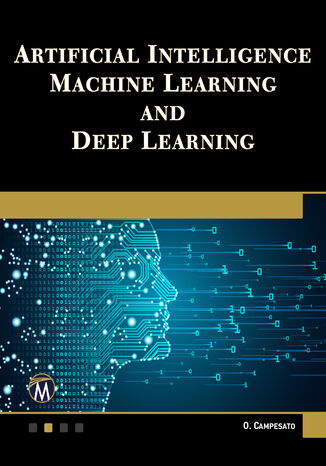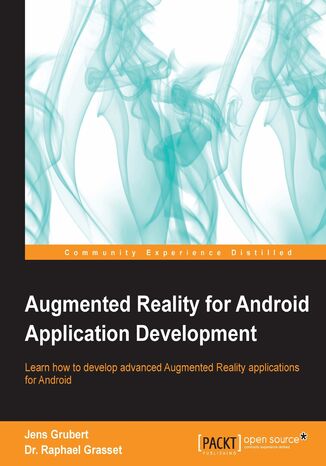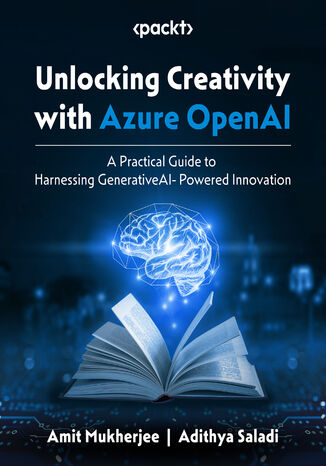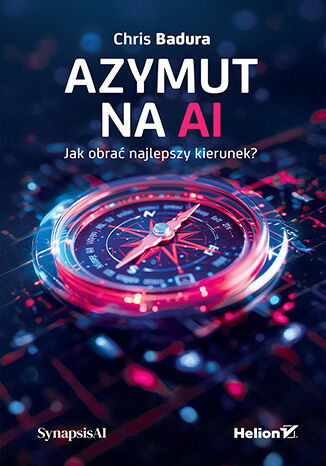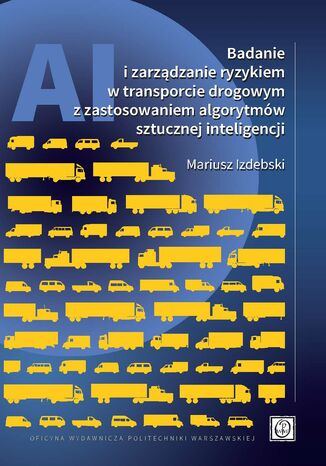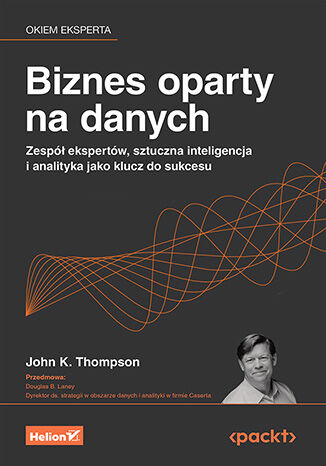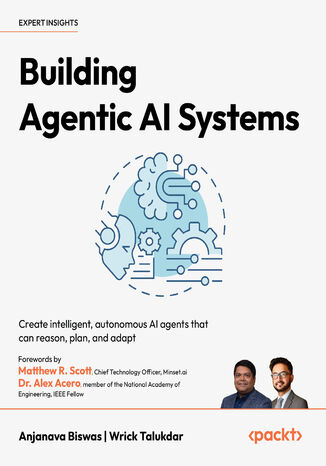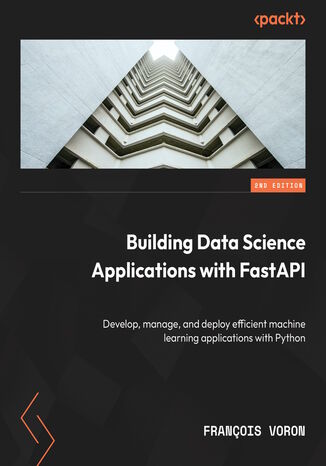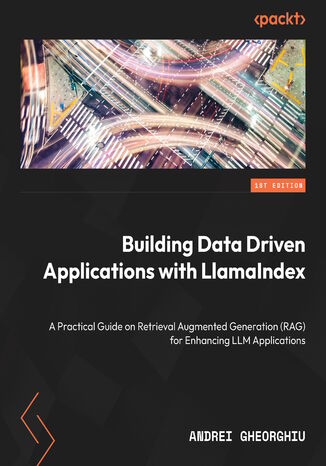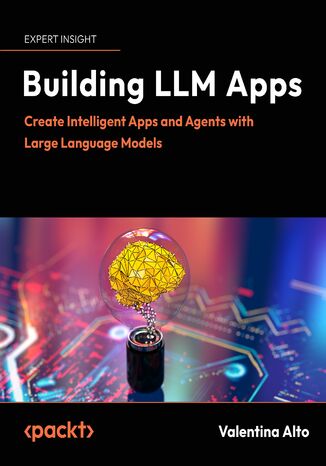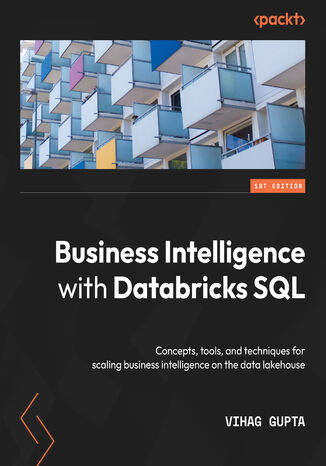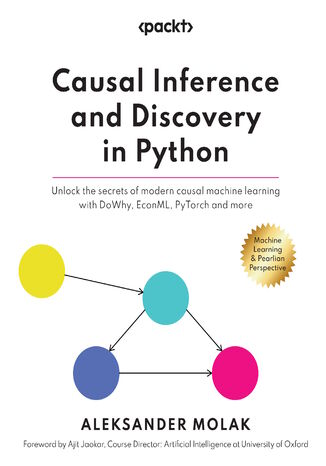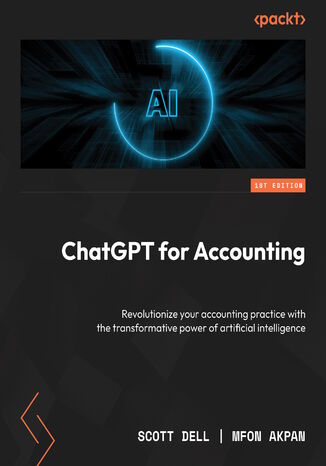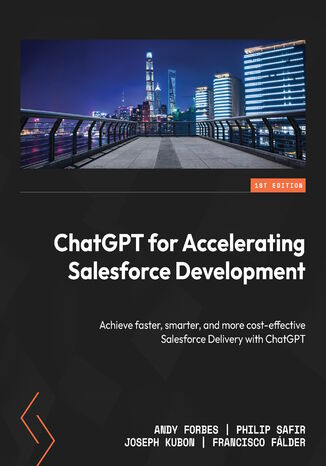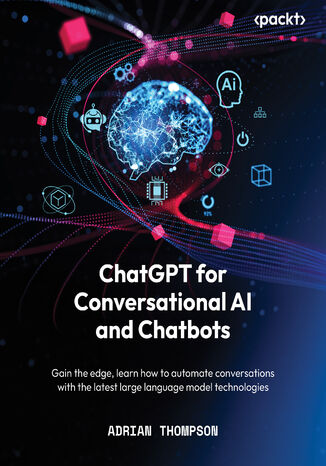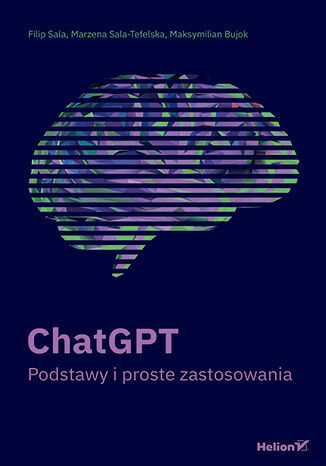Kategorien
E-Books
-
Wirtschaft
- Bitcoin
- Geschäftsfrau
- Coaching
- Controlling
- E-Business
- Ökonomie
- Finanzen
- Börse und Investitionen
- Persönliche Kompetenzen
- Computer im Büro
- Kommunikation und Verhandlungen
- Kleines Unternehmen
- Marketing
- Motivation
- Multimedia-Training
- Immobilien
- Überzeugung und NLP
- Steuern
- Sozialpolitik
- Handbȕcher
- Präsentationen
- Führung
- Public Relation
- Berichte, Analysen
- Geheimnis
- Social Media
- Verkauf
- Start-up
- Ihre Karriere
- Management
- Projektmanagement
- Personal (HR)
-
Für Kinder
-
Für Jugendliche
-
Bildung
-
Enzyklopädien, Wörterbücher
-
E-Presse
- Architektura i wnętrza
- Sicherheit und Gesundheit am Arbeitsplatz
- Biznes i Ekonomia
- Haus und Garten
- E-Business
- Ekonomia i finanse
- Esoterik
- Finanzen
- Persönliche Finanzen
- Unternehmen
- Fotografie
- Informatik
- HR und Gehaltsabrechnung
- Frauen
- Computer, Excel
- Buchhaltung
- Kultur und Literatur
- Wissenschaftlich und akademisch
- Umweltschutz
- meinungsbildend
- Bildung
- Steuern
- Reisen
- Psychologie
- Religion
- Landwirtschaft
- Buch- und Pressemarkt
- Transport und Spedition
- Gesundheit und Schönheit
-
Geschichte
-
Informatik
- Office-Programme
- Datenbank
- Bioinformatik
- IT Branche
- CAD/CAM
- Digital Lifestyle
- DTP
- Elektronik
- Digitale Fotografie
- Computergrafik
- Spiele
- Hacking
- Hardware
- IT w ekonomii
- Wissenschaftliche Pakete
- Schulbücher
- Computergrundlagen
- Programmierung
- Mobile-Programmierung
- Internet-Server
- Computernetzwerke
- Start-up
- Betriebssysteme
- Künstliche Inteligenz
- Technik für Kinder
- Webmaster
-
Andere
-
Fremdsprachen lernen
-
Kultur und Kunst
-
Lektüre
-
Literatur
- Anthologien
- Ballade
- Biografien und Autobiografien
- Für Erwachsene
- Drama
- Tagebücher, Memoiren, Briefe
- Epos
- Essay
- Science Fiction
- Felietonys
- Fiktion
- Humor, Satire
- Andere
- Klassisch
- Krimi
- Sachbücher
- Belletristik
- Mity i legendy
- Nobelpreisträger
- Kurzgeschichten
- Gesellschaftlich
- Okultyzm i magia
- Erzählung
- Erinnerungen
- Reisen
- Gedicht
- Poesie
- Politik
- Populärwissenschaftlich
- Roman
- Historischer Roman
- Prosa
- Abenteuer
- Journalismus
- Reportage
- Romans i literatura obyczajowa
- Sensation
- Thriller, Horror
- Interviews und Erinnerungen
-
Naturwissenschaften
-
Sozialwissenschaften
-
Schulbücher
-
Populärwissenschaft und akademisch
- Archäologie
- Bibliotekoznawstwo
- Filmwissenschaft
- Philologie
- Polnische Philologie
- Philosophie
- Finanse i bankowość
- Erdkunde
- Wirtschaft
- Handel. Weltwirtschaft
- Geschichte und Archäologie
- Kunst- und Architekturgeschichte
- Kulturwissenschaft
- Linguistik
- Literaturwissenschaft
- Logistik
- Mathematik
- Medizin
- Geisteswissenschaften
- Pädagogik
- Lehrmittel
- Populärwissenschaftlich
- Andere
- Psychologie
- Soziologie
- Theatrologie
- Teologie
- Theorien und Wirtschaftswissenschaften
- Transport i spedycja
- Sportunterricht
- Zarządzanie i marketing
-
Handbȕcher
-
Spielanleitungen
-
Professioneller und fachkundige Leitfaden
-
Jura
- Sicherheit und Gesundheit am Arbeitsplatz
- Geschichte
- Verkehrsregeln. Führerschein
- Rechtswissenschaften
- Gesundheitswesen
- Allgemeines. Wissenskompendium
- akademische Bücher
- Andere
- Bau- und Wohnungsrecht
- Zivilrecht
- Finanzrecht
- Wirtschaftsrecht
- Wirtschafts- und Handelsrecht
- Strafrecht
- Strafrecht. Kriminelle Taten. Kriminologie
- Internationales Recht
- Internationales und ausländisches Recht
- Gesundheitsschutzgesetz
- Bildungsrecht
- Steuerrecht
- Arbeits- und Sozialversicherungsrecht
- Öffentliches, Verfassungs- und Verwaltungsrecht
- Familien- und Vormundschaftsrecht
- Agrarrecht
- Sozialrecht, Arbeitsrecht
- EU-Recht
- Industrie
- Agrar- und Umweltschutz
- Wörterbücher und Enzyklopädien
- Öffentliche Auftragsvergabe
- Management
-
Führer und Reisen
- Afrika
- Alben
- Südamerika
- Mittel- und Nordamerika
- Australien, Neuseeland, Ozeanien
- Österreich
- Asien
- Balkan
- Naher Osten
- Bulgarien
- China
- Kroatien
- Tschechische Republik
- Dänemark
- Ägypten
- Estland
- Europa
- Frankreich
- Berge
- Griechenland
- Spanien
- Niederlande
- Island
- Litauen
- Lettland
- Mapy, Plany miast, Atlasy
- Miniführer
- Deutschland
- Norwegen
- Aktive Reisen
- Polen
- Portugal
- Andere
- Przewodniki po hotelach i restauracjach
- Russland
- Rumänien
- Slowakei
- Slowenien
- Schweiz
- Schweden
- Welt
- Türkei
- Ukraine
- Ungarn
- Großbritannien
- Italien
-
Psychologie
- Lebensphilosophien
- Kompetencje psychospołeczne
- zwischenmenschliche Kommunikation
- Mindfulness
- Allgemeines
- Überzeugung und NLP
- Akademische Psychologie
- Psychologie von Seele und Geist
- Arbeitspsychologie
- Relacje i związki
- Elternschafts- und Kinderpsychologie
- Problemlösung
- Intellektuelle Entwicklung
- Geheimnis
- Sexualität
- Verführung
- Aussehen ind Image
- Lebensphilosophien
-
Religion
-
Sport, Fitness, Diäten
-
Technik und Mechanik
Hörbücher
-
Wirtschaft
- Bitcoin
- Geschäftsfrau
- Coaching
- Controlling
- E-Business
- Ökonomie
- Finanzen
- Börse und Investitionen
- Persönliche Kompetenzen
- Kommunikation und Verhandlungen
- Kleines Unternehmen
- Marketing
- Motivation
- Immobilien
- Überzeugung und NLP
- Steuern
- Sozialpolitik
- Handbȕcher
- Präsentationen
- Führung
- Public Relation
- Geheimnis
- Social Media
- Verkauf
- Start-up
- Ihre Karriere
- Management
- Projektmanagement
- Personal (HR)
-
Für Kinder
-
Für Jugendliche
-
Bildung
-
Enzyklopädien, Wörterbücher
-
E-Presse
-
Geschichte
-
Informatik
-
Andere
-
Fremdsprachen lernen
-
Kultur und Kunst
-
Lektüre
-
Literatur
- Anthologien
- Ballade
- Biografien und Autobiografien
- Für Erwachsene
- Drama
- Tagebücher, Memoiren, Briefe
- Epos
- Essay
- Science Fiction
- Felietonys
- Fiktion
- Humor, Satire
- Andere
- Klassisch
- Krimi
- Sachbücher
- Belletristik
- Mity i legendy
- Nobelpreisträger
- Kurzgeschichten
- Gesellschaftlich
- Okultyzm i magia
- Erzählung
- Erinnerungen
- Reisen
- Poesie
- Politik
- Populärwissenschaftlich
- Roman
- Historischer Roman
- Prosa
- Abenteuer
- Journalismus
- Reportage
- Romans i literatura obyczajowa
- Sensation
- Thriller, Horror
- Interviews und Erinnerungen
-
Naturwissenschaften
-
Sozialwissenschaften
-
Populärwissenschaft und akademisch
- Archäologie
- Philosophie
- Wirtschaft
- Handel. Weltwirtschaft
- Geschichte und Archäologie
- Kunst- und Architekturgeschichte
- Kulturwissenschaft
- Literaturwissenschaft
- Mathematik
- Medizin
- Geisteswissenschaften
- Pädagogik
- Lehrmittel
- Populärwissenschaftlich
- Andere
- Psychologie
- Soziologie
- Teologie
- Zarządzanie i marketing
-
Handbȕcher
-
Professioneller und fachkundige Leitfaden
-
Jura
-
Führer und Reisen
-
Psychologie
- Lebensphilosophien
- zwischenmenschliche Kommunikation
- Mindfulness
- Allgemeines
- Überzeugung und NLP
- Akademische Psychologie
- Psychologie von Seele und Geist
- Arbeitspsychologie
- Relacje i związki
- Elternschafts- und Kinderpsychologie
- Problemlösung
- Intellektuelle Entwicklung
- Geheimnis
- Sexualität
- Verführung
- Aussehen ind Image
- Lebensphilosophien
-
Religion
-
Sport, Fitness, Diäten
-
Technik und Mechanik
Videokurse
-
Datenbank
-
Big Data
-
Biznes, ekonomia i marketing
-
Cybersicherheit
-
Data Science
-
DevOps
-
Für Kinder
-
Elektronik
-
Grafik / Video / CAX
-
Spiele
-
Microsoft Office
-
Entwicklungstools
-
Programmierung
-
Persönliche Entwicklung
-
Computernetzwerke
-
Betriebssysteme
-
Softwaretest
-
Mobile Geräte
-
UX/UI
-
Web development
-
Management
Podcasts
- E-Books
- Informatik
- Künstliche Inteligenz
Künstliche Inteligenz
Mercury Learning and Information, Paul Boudreau
Artificial intelligence is reshaping the way projects are managed, offering unprecedented opportunities to improve efficiency, accuracy, and outcomes. This course begins with an introduction to AI’s role in project management, exploring how machine learning, natural language processing, and predictive algorithms can transform traditional approaches. You’ll learn about the key components of AI-driven projects and how to develop a strong business case for adopting these innovations.As you progress, the course delves into practical applications of AI in automating project tasks, analyzing data, and predicting results. Participants will gain hands-on experience with tools that leverage machine learning to forecast project success, improve productivity, and resolve potential failures. Additionally, you’ll discover how generative AI and large language models can enhance communication, planning, and decision-making throughout the project lifecycle.Finally, the course examines the broader implications of integrating AI into project management. You’ll explore strategies for acquiring AI solutions, implementing them within teams, and navigating the ethical challenges they present. By the end of the course, participants will have a clear understanding of how to leverage AI to optimize projects and stay competitive in a rapidly evolving technological landscape.
Written for Salesforce architects who want quickly implementable AI solutions for their business challenges, Architecting AI Solutions on Salesforce is a shortcut to understanding Salesforce Einstein’s full capabilities – and using them.To illustrate the full technical benefits of Salesforce’s own AI solutions and components, this book will take you through a case study of a fictional company beginning to adopt AI in its Salesforce ecosystem. As you progress, you'll learn how to configure and extend the out-of-the-box features on various Salesforce clouds, their pros, cons, and limitations. You'll also discover how to extend these features using on- and off-platform choices and how to make the best architectural choices when designing custom solutions. Later, you'll advance to integrating third-party AI services such as the Google Translation API, Microsoft Cognitive Services, and Amazon SageMaker on top of your existing solutions. This isn’t a beginners’ Salesforce book, but a comprehensive overview with practical examples that will also take you through key architectural decisions and trade-offs that may impact the design choices you make.By the end of this book, you'll be able to use Salesforce to design powerful tailor-made solutions for your customers with confidence.
Artificial Intelligence and Expert Systems. Techniques and Applications for Problem Solving
Mercury Learning and Information, I. Gupta, G. Nagpal
This book covers current AI applications and techniques for solving problems and accomplishing tasks. It introduces branches of AI such as formal logic, reasoning, knowledge engineering, expert systems, neural networks, and fuzzy logic. It emphasizes expert systems, with sections on state space search, knowledge engineering, neural networks, fuzzy logic, and Prolog.It begins with an introduction to AI and its applications, setting the stage for foundational concepts. Readers are guided through state space search and heuristic search strategies, crucial for problem-solving in AI. The focus shifts to expert systems, covering their development life cycle, knowledge acquisition, and representation, providing a deep dive into emulating human decision-making.Later chapters cover neural networks and the learning process, essential for creating adaptive systems. Sections on fuzzy logic and fuzzy systems introduce methods for handling uncertainty in AI. Final chapters on programming in logic and advanced Prolog offer practical techniques for AI solutions. This approach equips readers with the skills to apply AI in various domains, enhancing their problem-solving abilities and understanding of intelligent systems.
Artificial Intelligence Basics. A Self-Teaching Introduction
Mercury Learning and Information, N. Gupta, R. Mangla
This book is designed as a self-teaching introduction to the fundamental concepts of artificial intelligence (AI). It begins with the history of AI, the Turing test, and early applications, providing a strong foundation. Later chapters cover the basics of searching, game playing, and knowledge representation. The journey continues with detailed explorations of expert systems and machine learning, equipping readers with essential AI techniques.As the course progresses, you will delve into separate programming chapters on Prolog and Python, learning how to implement AI concepts in these languages. These chapters offer practical coding experience, enhancing your understanding of AI programming. The book culminates with a comprehensive chapter on AI machines and robotics, showcasing numerous modern applications and providing a glimpse into the future of AI technology.Understanding these AI concepts is crucial as they form the basis of many modern technologies and applications. This book ensures a smooth transition from a beginner to a proficient AI practitioner, equipped with both theoretical knowledge and practical skills. By the end of the book, you will have a thorough understanding of AI's history, core principles, and practical implementations, ready to apply this knowledge to real-world problems and projects.
Artificial Intelligence Engines. A Tutorial Introduction to the Mathematics of Deep Learning
This book is a comprehensive guide to the mathematics behind artificial intelligence engines, taking readers from foundational concepts to advanced applications. It begins with an introduction to artificial neural networks, exploring topics like perceptrons, linear associative networks, and gradient descent. Practical examples accompany each chapter, making complex mathematical principles accessible, even for those with limited prior knowledge.The book's detailed structure covers key algorithms like backpropagation, Hopfield networks, and Boltzmann machines, advancing to deep restricted Boltzmann machines, variational autoencoders, and convolutional neural networks. Modern topics such as generative adversarial networks, reinforcement learning, and capsule networks are explored in depth. Each section connects theory to real-world AI applications, helping readers understand how these techniques are used in practice.Ideal for students, researchers, and AI enthusiasts, the book balances theoretical depth with practical insights. Basic mathematical knowledge or foundation is recommended, allowing readers to fully engage with the content. This book serves as an accessible yet thorough resource for anyone eager to dive deeper into artificial intelligence and machine learning.
Artificial Intelligence in the 21st Century. The Future of Technology and Human Innovation
Mercury Learning and Information, Stephen Lucci, Sarhan M. Musa, Danny Kopec
This third edition provides a comprehensive, accessible presentation of AI, including examples, applications, full-color images, and human interest boxes. New chapters on deep learning, AI security, and AI programming keep the content cutting-edge. Topics like neural networks, genetic algorithms, natural language processing, planning, and complex board games are covered.The course starts with an AI overview, moving through uninformed search, intelligent search methods, and game-based strategies. It delves into logic in AI, knowledge representation, production systems, uncertainty in AI, and expert systems. Middle chapters cover machine learning, neural networks, and deep learning. It continues with nature-inspired search methods, natural language processing, and automated planning, ending with robotics and advanced computer games.These AI concepts are crucial for developing sophisticated AI applications. This book transitions you from novice to proficient AI practitioner, equipped with practical skills and comprehensive knowledge. Companion files with resources, simulations, and figures enhance learning. By the end, you'll understand AI principles and applications, ready to tackle real-world challenges.
Mercury Learning and Information, Oswald Campesato
This book introduces AI, then explores machine learning, deep learning, natural language processing (NLP), and reinforcement learning. Readers learn about classifiers like logistic regression, k-NN, decision trees, random forests, and SVMs. It delves into deep learning architectures such as CNNs, RNNs, LSTMs, and autoencoders, with Keras-based code samples supplementing the theory.Starting with a foundational AI overview, the course progresses into machine learning, explaining classifiers and their applications. It continues with deep learning, focusing on architectures like CNNs and RNNs. Advanced topics include LSTMs and autoencoders, essential for modern AI. The book also covers NLP and reinforcement learning, emphasizing their importance.Understanding these concepts is vital for developing advanced AI systems. This book transitions you from beginner to proficient AI practitioner, combining theoretical knowledge and practical skills. Appendices on Keras, TensorFlow 2, and Pandas enrich the learning experience. By the end, readers will understand AI principles and be ready to apply them in real-world scenarios.
Dr. Raphael Grasset, Jens Grubert
Augmented Reality offers the magical effect of blending the physical world with the virtual world, which brings applications from your screen into your hands. AR redefines advertising and gaming, as well as education. It will soon become a technology that will have to be mastered as a necessity by mobile application developers.Augmented Reality for Android Application Development enables you to implement sensor-based and computer vision-based AR applications on Android devices. You will learn about the theoretical foundations and practical details of implemented AR applications, and you will be provided with hands-on examples that will enable you to quickly develop and deploy novel AR applications on your own.Augmented Reality for Android Application Development will help you learn the basics of developing mobile AR browsers, how to integrate and animate 3D objects easily with the JMonkeyEngine, how to unleash the power of computer vision-based AR using the Vuforia AR SDK, and will teach you about popular interaction metaphors. You will get comprehensive knowledge of how to implement a wide variety of AR apps using hands-on examples.This book will make you aware of how to use the AR engine, Android layout, and overlays, and how to use ARToolkit. Finally, you will be able to apply this knowledge to make a stunning AR application.
Amit Mukherjee, Adithya Saladi, Marco Casalaina
Find out what makes Azure OpenAI a robust platform for building AI-driven solutions that can transform how businesses operate. Written by seasoned experts from Microsoft, this book will guide you in understanding Azure OpenAI from fundamentals through to advanced concepts and best practices.The book begins with an introduction to large language models (LLMs) and the Azure OpenAI Service, detailing how to access, use, and optimize its models. You'll learn how to design and implement AI-driven solutions, such as question-answering systems, contact center analytics, and GPT-powered search applications. Additionally, the chapters walk you through advanced concepts, including embeddings, fine-tuning models, prompt engineering, and building custom AI applications using LangChain and Semantic Kernel. You'll explore real-world use cases such as QnA systems, document summarizers, and SQLGPT for database querying, as well as gain insights into securing and operationalizing these solutions in enterprises.By the end of this book, you'll be ready to design, develop, and deploy scalable AI solutions, ensuring business success through intelligent automation and data-driven insights.
Azymut na AI. Jak obrać najlepszy kierunek?
Rewolucja już tu jest Decyzja, by napisać tę książkę, wzięła się z przekonania jej autora, że w sercu każdej technologii powinien się znajdować człowiek: jego potrzeby, emocje i marzenia. Drugim powodem było pragnienie nakreślenia ogromu perspektyw, jakie otwiera przed nami sztuczna inteligencja. I nie chodzi tu tylko o możliwości techniczne. Także o to, że AI zaprasza ludzi do świata, w którym maszyny rozumieją ich lepiej niż kiedykolwiek przedtem. Rewolucja AI właśnie się rozpoczyna, dobrze jest się do niej zawczasu przygotować - zarówno mentalnie, jak i zawodowo. Zacznij czytać i przekonaj się, w jaki sposób sztuczna inteligencja kształtuje teraźniejszość i przyszłość w różnych aspektach życia: od rewolucyjnych zmian w edukacji, poprzez przełomowe zastosowania w medycynie, aż po wyjątkowe innowacje w sztuce i designie. Zrozum, jak działa sztuczna inteligencja Dowiedz się, w jakich dziedzinach życia wspomaga nas już dziś Naucz się z nią komunikować Poznaj zawody, w których współpraca z AI będzie wkrótce odgrywała kluczową rolę Zobacz, jak za przyczyną sztucznej inteligencji zmieni się świat
Praca dotyczy tematyki zarządzania ryzykiem w transporcie drogowym z wykorzystaniem algorytmów sztucznej inteligencji w procesach przewozowych do minimalizacji zdarzeń niebezpiecznych. Wartością poznawczą przeprowadzonych badań jest opracowanie autorskich, oryginalnych modeli zarządzania ryzykiem w transporcie drogowym wraz z ich algorytmizacją narzędziami sztucznej inteligencji. Opracowane modele zarządzania ryzykiem mogą mieć zastosowanie w różnych obszarach, np. budownictwie. Wykorzystanie algorytmów sztucznej inteligencji w zarządzaniu ryzykiem w transporcie drogowym pozwoliło na opracowanie oryginalnych metod oceny i zarządzania ryzykiem w procesach przewozowych. Do badania redukcji poziomu ryzyka zastosowano dwa zaawansowane algorytmy sztucznej inteligencji - mrówkowy i genetyczny. Sposób ich działania jest różny, co pozwoliło na porównanie jakości generowanych rozwiązań, a tym samym wyznaczenie efektywności tych algorytmów w zarządzaniu ryzykiem w transporcie drogowym. Monografia składa się z dziewięciu rozdziałów, które podzielono na trzy obszary tematyczne. W pierwszym obszarze (rozdz. 1-3) zdefiniowano najnowsze badania z zakresu tematyki ryzyka w transporcie drogowym, scharakteryzowano kluczowe zagrożenia w procesach przewozowych i przedstawiono procedurę zarządzania ryzykiem w transporcie drogowym. Kluczowym elementem tej części monografii jest opis algorytmów sztucznej inteligencji stosowanych w zarządzaniu ryzykiem w transporcie drogowym, ze szczególnym podkreśleniem dużej roli, jaką odgrywają użyte algorytmy. W drugim obszarze (rozdz. 4 i 5) opisano modele zarządzania ryzykiem w transporcie drogowym i przedstawiono ich formalny zapis. W trzecim obszarze (rozdz. 6-8) opisano proces algorytmizacji opracowanych modeli zarządzania ryzykiem wraz ze sposobem szacowania ryzyka na odcinkach sieci transportowej i przedstawiono weryfikację algorytmów zastosowanych w aplikacji do przykładów. W podsumowaniu monografii przedłożono rekomendacje dla decydentów zarządzających ryzykiem w transporcie drogowym, a także podkreślono oryginalność przedstawionych badań i ich dalszy kierunek.
Biznes oparty na danych. Zespół ekspertów, sztuczna inteligencja i analityka jako klucz do sukcesu
John K. Thompson, Douglas B. Laney
Skuteczna analityka wymaga wykonywania wieloaspektowego zestawu zadań w ramach właściwie zarządzanego procesu. Thomas H. Davenport, profesor Babson College Analityka mocno się zmieniła. Kiedyś skupiała się głównie na tworzeniu raportów i wykresów, które prezentowały dane w atrakcyjnej formie. Teraz stała się bardziej zaawansowana ― zespoły pracują w nowy sposób, łącząc różnorodne umiejętności, takie jak analiza danych, programowanie i znajomość biznesu. Dzięki temu decyzje podejmowane w firmach mogą być lepsze, a osiąganie celów ― łatwiejsze. Jednak by to działało, potrzebne są zmiany w strukturze organizacji i podejściu do pracy. Oto najbardziej praktyczny poradnik korzystania z analityki w funkcjonowaniu organizacji! Bill Schmarzo, dyrektor do spraw innowacji w Hitachi Vantara W tej książce znajdziesz podstawowe koncepcje związane z budowaniem skutecznych zespołów analitycznych i zarządzaniem nimi. Wyjaśniono w niej dokładnie, co należy robić, kogo zatrudniać, jakie projekty realizować i czego unikać na drodze do zbudowania sprawnego zespołu analitycznego. Omówiono również znaczenie biznesowego cyklu decyzyjnego w osiąganiu trwałego sukcesu przedsiębiorstwa. Ponadto poznasz wartościowe modele z obszaru zaawansowanej analityki i prognoz opartych na analizie danych. Nie zabrakło też opisu metod i praktyk zarządzania zespołami analitycznymi, a także wskazówek, jak wpływać na oczekiwania kierownictwa i wybierać projekty o największej wartości. Dzięki tej książce dyrektorzy wykonawczy i zespoły analityczne dowiedzą się, jak wypracować trwałą, strategiczną, a nawet rewolucyjną przewagę! Kirk Borne, główny danolog w Booz Allen Hamilton John K. Thompson jest dyrektorem do spraw technologii z ponad 30-letnim doświadczeniem w dziedzinie zaawansowanej analityki biznesowej. Obecnie odpowiada za globalny zespół zaawansowanej analityki i sztucznej inteligencji w CSL Behring. Interesuje go rozwijanie innowacyjnych technologii w celu zwiększenia wartości uzyskiwanej przez organizacje na całym świecie. Bogata wiedza i praktyczne doświadczenie autora zwiększają wartość tej doskonałej książki! Judith Hurwitz, prezeska Hurwitz & Associates
Anjanava Biswas, Wrick Talukdar, Matthew R. Scott, Dr. Alex Acero
Gain unparalleled insights into the future of AI autonomy with this comprehensive guide to designing and deploying autonomous AI agents that leverage generative AI (GenAI) to plan, reason, and act. Written by industry-leading AI architects and recognized experts shaping global AI standards and building real-world enterprise AI solutions, it explores the fundamentals of agentic systems, detailing how AI agents operate independently, make decisions, and leverage tools to accomplish complex tasks.Starting with the foundations of GenAI and agentic architectures, you’ll explore decision-making frameworks, self-improvement mechanisms, and adaptability. The book covers advanced design techniques, such as multi-step planning, tool integration, and the coordinator, worker, and delegator approach for scalable AI agents.Beyond design, it addresses critical aspects of trust, safety, and ethics, ensuring AI systems align with human values and operate transparently. Real-world applications illustrate how agentic AI transforms industries such as automation, finance, and healthcare. With deep insights into AI frameworks, prompt engineering, and multi-agent collaboration, this book equips you to build next-generation adaptive, scalable AI agents that go beyond simple task execution and act with minimal human intervention.
In the fast-paced world of AI, developers are constantly seeking efficient ways to integrate AI capabilities into their apps. Microsoft Semantic Kernel simplifies this process by using the GenAI features from Microsoft and OpenAI.Written by Lucas A. Meyer, a Principal Research Scientist in Microsoft’s AI for Good Lab, this book helps you get hands on with Semantic Kernel. It begins by introducing you to different generative AI services such as GPT-3.5 and GPT-4, demonstrating their integration with Semantic Kernel. You’ll then learn to craft prompt templates for reuse across various AI services and variables. Next, you’ll learn how to add functionality to Semantic Kernel by creating your own plugins. The second part of the book shows you how to combine multiple plugins to execute complex actions, and how to let Semantic Kernel use its own AI to solve complex problems by calling plugins, including the ones made by you. The book concludes by teaching you how to use vector databases to expand the memory of your AI services and how to help AI remember the context of earlier requests. You’ll also be guided through several real-world examples of applications, such as RAG and custom GPT agents.By the end of this book, you'll have gained the knowledge you need to start using Semantic Kernel to add AI capabilities to your applications.
Building Data Science Applications with FastAPI is the go-to resource for creating efficient and dependable data science API backends. This second edition incorporates the latest Python and FastAPI advancements, along with two new AI projects – a real-time object detection system and a text-to-image generation platform using Stable Diffusion. The book starts with the basics of FastAPI and modern Python programming. You'll grasp FastAPI's robust dependency injection system, which facilitates seamless database communication, authentication implementation, and ML model integration. As you progress, you'll learn testing and deployment best practices, guaranteeing high-quality, resilient applications. Throughout the book, you'll build data science applications using FastAPI with the help of projects covering common AI use cases, such as object detection and text-to-image generation. These hands-on experiences will deepen your understanding of using FastAPI in real-world scenarios. By the end of this book, you'll be well equipped to maintain, design, and monitor applications to meet the highest programming standards using FastAPI, empowering you to create fast and reliable data science API backends with ease while keeping up with the latest advancements.
Discover the immense potential of Generative AI and Large Language Models (LLMs) with this comprehensive guide. Learn to overcome LLM limitations, such as contextual memory constraints, prompt size issues, real-time data gaps, and occasional ‘hallucinations’. Follow practical examples to personalize and launch your LlamaIndex projects, mastering skills in ingesting, indexing, querying, and connecting dynamic knowledge bases. From fundamental LLM concepts to LlamaIndex deployment and customization, this book provides a holistic grasp of LlamaIndex's capabilities and applications. By the end, you'll be able to resolve LLM challenges and build interactive AI-driven applications using best practices in prompt engineering and troubleshooting Generative AI projects.
Building LLM Powered Applications. Create intelligent apps and agents with large language models
Building LLM Powered Applications delves into the fundamental concepts, cutting-edge technologies, and practical applications that LLMs offer, ultimately paving the way for the emergence of large foundation models (LFMs) that extend the boundaries of AI capabilities.The book begins with an in-depth introduction to LLMs. We then explore various mainstream architectural frameworks, including both proprietary models (GPT 3.5/4) and open-source models (Falcon LLM), and analyze their unique strengths and differences. Moving ahead, with a focus on the Python-based, lightweight framework called LangChain, we guide you through the process of creating intelligent agents capable of retrieving information from unstructured data and engaging with structured data using LLMs and powerful toolkits. Furthermore, the book ventures into the realm of LFMs, which transcend language modeling to encompass various AI tasks and modalities, such as vision and audio.Whether you are a seasoned AI expert or a newcomer to the field, this book is your roadmap to unlock the full potential of LLMs and forge a new era of intelligent machines.
In this new era of data platform system design, data lakes and data warehouses are giving way to the lakehouse – a new type of data platform system that aims to unify all data analytics into a single platform. Databricks, with its Databricks SQL product suite, is the hottest lakehouse platform out there, harnessing the power of Apache Spark™, Delta Lake, and other innovations to enable data warehousing capabilities on the lakehouse with data lake economics.This book is a comprehensive hands-on guide that helps you explore all the advanced features, use cases, and technology components of Databricks SQL. You’ll start with the lakehouse architecture fundamentals and understand how Databricks SQL fits into it. The book then shows you how to use the platform, from exploring data, executing queries, building reports, and using dashboards through to learning the administrative aspects of the lakehouse – data security, governance, and management of the computational power of the lakehouse. You’ll also delve into the core technology enablers of Databricks SQL – Delta Lake and Photon. Finally, you’ll get hands-on with advanced SQL commands for ingesting data and maintaining the lakehouse.By the end of this book, you’ll have mastered Databricks SQL and be able to deploy and deliver fast, scalable business intelligence on the lakehouse.
Causal methods present unique challenges compared to traditional machine learning and statistics. Learning causality can be challenging, but it offers distinct advantages that elude a purely statistical mindset. Causal Inference and Discovery in Python helps you unlock the potential of causality.You’ll start with basic motivations behind causal thinking and a comprehensive introduction to Pearlian causal concepts, such as structural causal models, interventions, counterfactuals, and more. Each concept is accompanied by a theoretical explanation and a set of practical exercises with Python code. Next, you’ll dive into the world of causal effect estimation, consistently progressing towards modern machine learning methods. Step-by-step, you’ll discover Python causal ecosystem and harness the power of cutting-edge algorithms. You’ll further explore the mechanics of how “causes leave traces” and compare the main families of causal discovery algorithms. The final chapter gives you a broad outlook into the future of causal AI where we examine challenges and opportunities and provide you with a comprehensive list of resources to learn more.By the end of this book, you will be able to build your own models for causal inference and discovery using statistical and machine learning techniques as well as perform basic project assessment.
Dr. Scott Dell, Dr. Mfon Akpan
In the fast-paced AI world, accounting professionals are increasingly challenged by the complexities of AI. Many struggle to integrate these advanced tools into their workflows, leading to a sense of overwhelm. ChatGPT for Accounting bridges this gap by not only simplifying AI concepts but also offering practical insights for its application in various accounting domains.This book takes you from the foundational principles of Generative Artificial Intelligence (GAI) to its practical applications in audits, tax planning, practice management, fraud examination, financial analysis, and beyond. Each chapter equips you with essential skills, showing you how AI can revolutionize internal control systems, enhance recruitment processes, streamline marketing plans, optimize tax strategies, and boost efficiency in audits. You’ll then advance to exploring the role of AI in forensic accounting, financial analysis, managerial accounting, and corporate governance, while also addressing ethical and security implications.Concluding with a reflective outlook on the promises and challenges of AI, you’ll gain a holistic view of the future of accounting. By the end of this book, you’ll be equipped with the knowledge to harness the power of AI effectively and ethically, transforming your accounting practice and staying ahead in the ever-evolving landscape.
Andy Forbes, Philip Safir, Joseph Kubon, Francisco Fálder
Authored by a team of Salesforce masters with exemplary IT background, ChatGPT for Salesforce Development helps you learn about the intricacies of Salesforce design, configuration, coding, and testing, demonstrating how ChatGPT can simplify complex setups and enhance project team efficiency.With this book, you’ll unlock the effective use of ChatGPT for crafting user stories that align seamlessly with project goals, learn how to design and implement Salesforce flows, and quickly write clear, comprehensive, and high-quality project documentation. You’ll leverage ChatGPT to write new Apex code, decipher existing code, and explore the development of web services and callouts. This book covers everything from trigger creation to the development of Lightning Web Components (LWC), highlighting how these can accelerate the development process. Applying ChatGPT's debugging capabilities, you’ll swiftly identify and resolve Salesforce issues to uphold the integrity and performance of your Salesforce applications.By the end of this book, you’ll be adept at integrating ChatGPT at every stage of Salesforce project delivery, from initial configuration to final testing.
ChatGPT for Conversational AI and Chatbots is a definitive resource for exploring conversational AI, ChatGPT, and large language models.This book introduces the fundamentals of ChatGPT and conversational AI automation. You’ll explore the application of ChatGPT in conversation design, the use of ChatGPT as a tool to create conversational experiences, and a range of other practical applications. As you progress, you’ll delve into LangChain, a dynamic framework for LLMs, covering topics such as prompt engineering, chatbot memory, using vector stores, and validating responses. Additionally, you’ll learn about creating and using LLM-enabling tools, monitoring and fine tuning, LangChain UI tools such as LangFlow, and the LangChain ecosystem. You’ll also cover popular use cases, such as using ChatGPT in conjunction with your own data. Later, the book focuses on creating a ChatGPT-powered chatbot that can comprehend and respond to queries directly from your unique data sources. The book then guides you through building chatbot UIs with ChatGPT API and some of the tools and best practices available.By the end of this book, you’ll be able to confidently leverage ChatGPT technologies to build conversational AI solutions.
Are you ready to unleash the potential of AI-driven cybersecurity? This cookbook takes you on a journey toward enhancing your cybersecurity skills, whether you’re a novice or a seasoned professional. By leveraging cutting-edge generative AI and large language models such as ChatGPT, you'll gain a competitive advantage in the ever-evolving cybersecurity landscape.ChatGPT for Cybersecurity Cookbook shows you how to automate and optimize various cybersecurity tasks, including penetration testing, vulnerability assessments, risk assessment, and threat detection. Each recipe demonstrates step by step how to utilize ChatGPT and the OpenAI API to generate complex commands, write code, and even create complete tools. You’ll discover how AI-powered cybersecurity can revolutionize your approach to security, providing you with new strategies and techniques for tackling challenges. As you progress, you’ll dive into detailed recipes covering attack vector automation, vulnerability scanning, GPT-assisted code analysis, and more. By learning to harness the power of generative AI, you'll not only expand your skillset but also increase your efficiency.By the end of this cybersecurity book, you’ll have the confidence and knowledge you need to stay ahead of the curve, mastering the latest generative AI tools and techniques in cybersecurity.
ChatGPT. Podstawy i proste zastosowania
Filip Sala, Marzena Sala-Tefelska, Maksymilian Bujok
Twój nowy, nad wyraz inteligentny współpracownik ChatGPT, czyli flagowy produkt firmy OpenAI, jest dziś na ustach wszystkich. Przyglądamy się dotychczasowym zastosowaniom sztucznej inteligencji, ale nasze myśli najbardziej zaprzątają przewidywania co do jej przyszłości. Autorzy udowadniają, że nie mamy się czego obawiać. Co więcej, pokazują, że najlepszym sposobem na pokonanie strachu przed nieznanym jest zrozumienie, czego się boimy. A możemy to osiągnąć dzięki praktycznym wskazówkom udzielonym w tej książce. Współpraca z ChatGPT wymaga pewnego przygotowania. Niewątpliwą zaletą tej technologii jest to, że można się z nią porozumieć za pomocą języka naturalnego ― takiego, jakim komunikujemy się ze sobą na co dzień. Rzecz w tym, by nauczyć się w odpowiedni sposób zadawać pytania i wydawać polecenia, czyli tworzyć tak zwane prompty. W trakcie lektury prześledzisz różne metody tworzenia zapytań i poznasz konkretne przykłady ich zastosowania. Dowiesz się między innymi, jak pracować z tekstem, grafiką i analizą danych, a także jak skorzystać z ChatGPT do celów dydaktycznych. Zrozumiesz również, jak sztuczna inteligencja może Cię wesprzeć w programowaniu i projektowaniu. Dzięki temu będziesz w stanie osiągnąć wszystkie cele, jakie sobie wyznaczasz ― i to zarówno w życiu osobistym, jak i zawodowym. Już dziś rozpocznij przygodę z ChatGPT! Książka jest przeznaczona przede wszystkim dla osób początkujących i tych, które ze sztuczną inteligencją nie miały dotychczas do czynienia. Zachęcamy również do odwiedzenia kanału naukowego Sala Science prowadzonego przez autorów na platformie YouTube.

